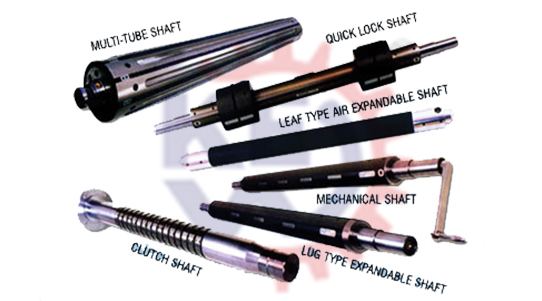 | ||
A shaft is a rotating machine element, usually circular in cross section, which is used to transmit power from one part to another, or from a machine which produces power to a machine which absorbs power. The various members such as pulleys and gears are mounted on it.
Contents
Types
They are mainly classified into two types.
Materials
The material used for ordinary shafts is mild steel. When high strength is required, an alloy steel such as nickel, nickel-chromium or chromium-vanadium steel is used.
Shafts are generally formed by hot rolling and finished to size by cold drawing or turning and grinding.
Standard sizes
=====machine shafts=====Transmission shafts
The standard lengths of the shafts are 5 m, 6 m and 7 m.
Stresses
The following stresses are induced in the shafts.
- Shear stresses due to the transmission of torque (due to torsional load).
- Bending stresses (tensile or compressive) due to the forces acting upon the machine elements like gears and pulleys as well as the self weight of the shaft.
- Stresses due to combined torsional and bending loads.
Design stresses
The maximum permissible (design) stresses in bending (tension or compression) may be taken as:
- 112 N/mm2 for shafts with allowance for keyways.
- 84 N/mm2 for shafts without allowance for keyways.
The maximum permissible (design) shear stresses may be taken as:
- 56 N/mm2 for shafts with allowance for keyways.
- 42 N/mm2 for shafts without allowance for keyways.
